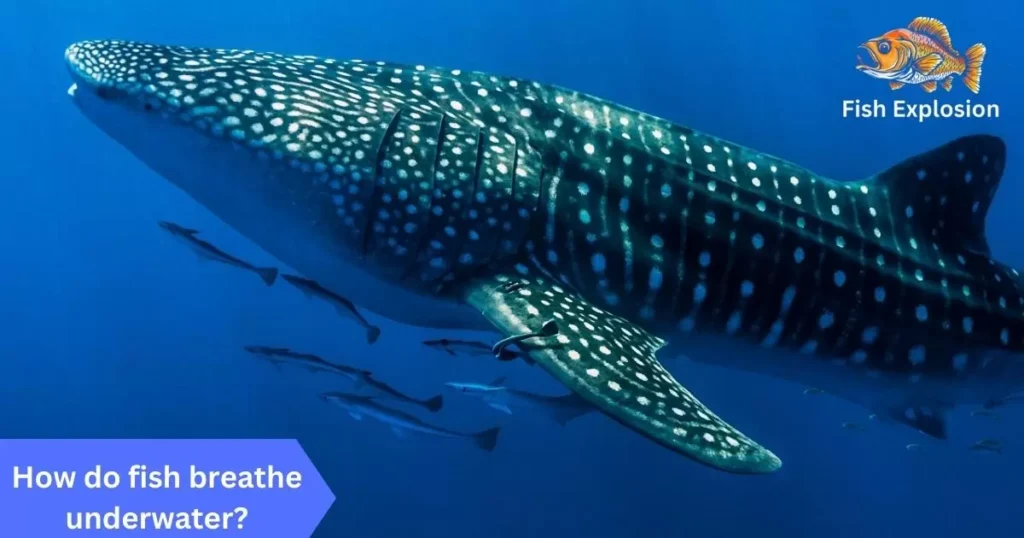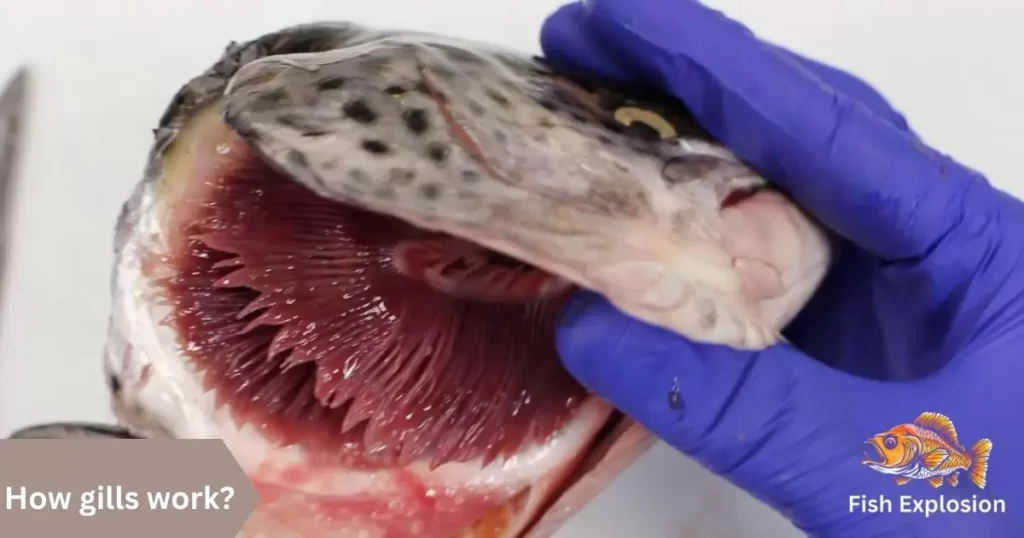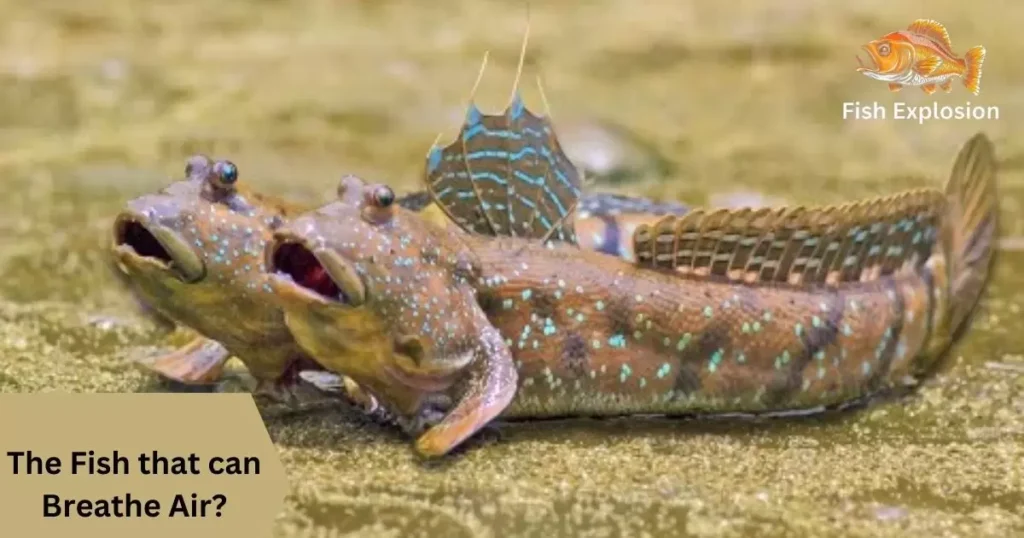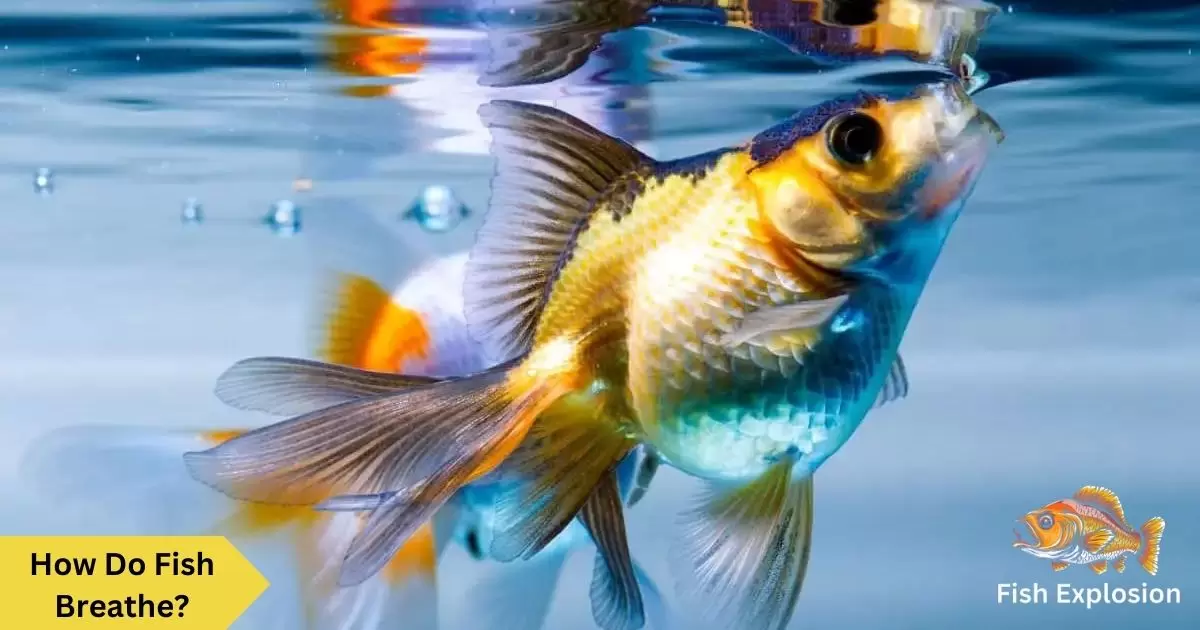Fish breathe through their gills, which are feathery structures located on either side of their head behind the operculum, or gill covers. Water flows over the gills due to the motion of the fish’s mouth and operculum, and the tiny filaments in the gills extract oxygen from the water and excrete carbon dioxide. Hemoglobin proteins in the blood pick up the oxygen as it passes through capillaries between the gill filaments, and carbon dioxide is removed. The movement of water across the gills establishes countercurrent flow, where oxygen-rich water flows in the opposite direction of deoxygenated water leaving the gills, enhancing gas exchange. This allows fish to efficiently obtain oxygen for respiration directly from the water passing over their gills, providing the gas exchange needed to support their lives underwater, where swimming lung-based breathing is not possible.
How do fish breathe underwater?

Fish have developed specialized organs called gills that allow them to breathe underwater. Gills are feathery structures located on either side of a fish’s head behind bony structures called opercula. Water flows over the gills due to the motion of the fish’s mouth and operculum.
The gills contain thin filaments that are highly vascularized with capillaries. As water passes over the gills, oxygen diffuses from the water into the capillaries, where it binds to hemoglobin proteins in the blood. Meanwhile, carbon dioxide diffuses out of the capillaries and is expelled from the gill filaments and into the surrounding water.
The movement of water across the gills sets up a system of countercurrent flow that enhances gas exchange. Oxygen-rich water flows in the opposite direction of deoxygenated water exiting the gills. This improves the efficiency of oxygen absorption and carbon dioxide removal.
It allows fish to continuously breathe the oxygen dissolved in water and release carbon dioxide waste. Without gills, fish would be unable to extract dissolved gasses and support cellular respiration underwater like they can on land. The gill system is a key adaptation that enables fish to thrive in their aquatic environment.
Read More: “Pros And Cons Of Fishing Before Rain, During Rain, And After Rain”
How gills work?

Gills are the respiratory organs found in many aquatic organisms, such as fish, mollusks, and crustaceans.
They are designed to extract dissolved oxygen from water and excrete carbon dioxide.
The gills are typically located on either side of the body or head, and consist of feathery structures called filaments. These filaments are lined with thin, flat plates called lamellae, which are richly supplied with blood vessels.
As water passes over the lamellae, oxygen diffuses across the thin membrane and into the bloodstream, while carbon dioxide moves in the opposite direction, from the blood to the water.
- Countercurrent flow system: Water and blood flow in opposite directions, maximizing oxygen extraction efficiency.
- Gill rakers: Bony projections that filter out particles, preventing damage to the delicate gill filaments.
- Ventilation: Rhythmic opening and closing of the mouth and operculum (gill cover) drives water over the gills.
- Gill surface area: Fish with higher metabolic rates tend to have larger gill surface areas for increased gas exchange.
- Ion regulation: In addition to gas exchange, gills also help regulate salt and pH levels in the body.
What is the Function of Gills in Fish?
Gills are the respiratory organs that allow fish to extract oxygen from the water and expel carbon dioxide. Fish gills are feathery, pinkish organs located on either side of the head. As the fish opens and closes its mouth, water is drawn in through the mouth and forced out over the gills.
The thin gill filaments have many small blood vessels that allow oxygen from the water to diffuse into the bloodstream. At the same time, carbon dioxide waste from the fish’s metabolism diffuses out of the blood and into the water to be expelled.
This constant flow of water over the gills provides a continual supply of oxygenated water for the fish to “breathe.” The efficient gill system is essential for fish to survive and thrive in an underwater environment.
Labyrinths: The Fish that can Breathe Air?

Labyrinth fish are a unique group that have evolved an amazing ability – they can breathe air! These fish have a special organ called a labyrinth that allows them to take gulps of air from above the water’s surface.
The labyrinth organ is like a maze that helps the fish absorb oxygen from the air into their bloodstream. This incredible adaptation means labyrinth fish can survive in waters with very low oxygen levels that would kill most other fish species.
Some labyrinth fish, like the climbing perch, can even wiggle across land for short distances by breathing through their skin and gills.
Other examples include popular aquarium species like bettas (Siamese fighting fish), gouramis, and paradise fish. For hobbyists, these air-breathing labyrinth fish make fascinating pets!
FAQ’s
How does a fish breathe through its gills?
Fish breathe by taking in water through their mouths and forcing it out over their feathery gills which extract dissolved oxygen from the water.
What is the science behind fish gills?
The science is gas exchange across the thin gill filaments, which have many tiny blood vessels that allow dissolved oxygen to diffuse into the bloodstream and carbon dioxide waste to diffuse out.
What is the mechanism of gill respiration in fish?
The mechanism is that water flows in through the mouth, over the gills, where gas exchange occurs, and out of the gill openings in a continuous cycle driven by mouth/operculum movements.
How do fish breathe in the water experiment?
In a simple experiment showing fish breathing, fish in a container take in oxygen dissolved in the water which enters their gills, while their gill movements expel carbon dioxide into the water.
Conclusion
The ability of fish to breathe underwater relies on an incredibly efficient respiratory system centered around their gills. As water flows over the feathery gill filaments, thousands of tiny blood vessels allow dissolved oxygen to diffuse into the bloodstream while carbon dioxide waste diffuses out.
This continual gas exchange, driven by the fish’s pumping of water through its mouth and over the gills, supplies the body with the oxygen it needs. The unique gill structure, with its large surface area packed into a small space, maximizes the opportunity for the absorption of life-sustaining oxygen from the water.
At the same time, the counter-current flow system ensures maximum diffusion of oxygen into the blood and carbon dioxide out. Though relatively simple in appearance, the gill system is a biological marvel – allowing fish to extract enough oxygen to power their underwater activities.
From the smallest minnow to the largest shark, gills are the remarkable respiratory machines that make a fish’s aquatic life possible. The science behind how fish breathe through these organs is a fascinating example of evolutionary adaptation.
With three years of dedicated expertise in the niche of fish, my domain knowledge encompasses breeding, habitat maintenance, health management, and sustainable aquaculture practices, ensuring optimal outcomes in the aquatic realm.











